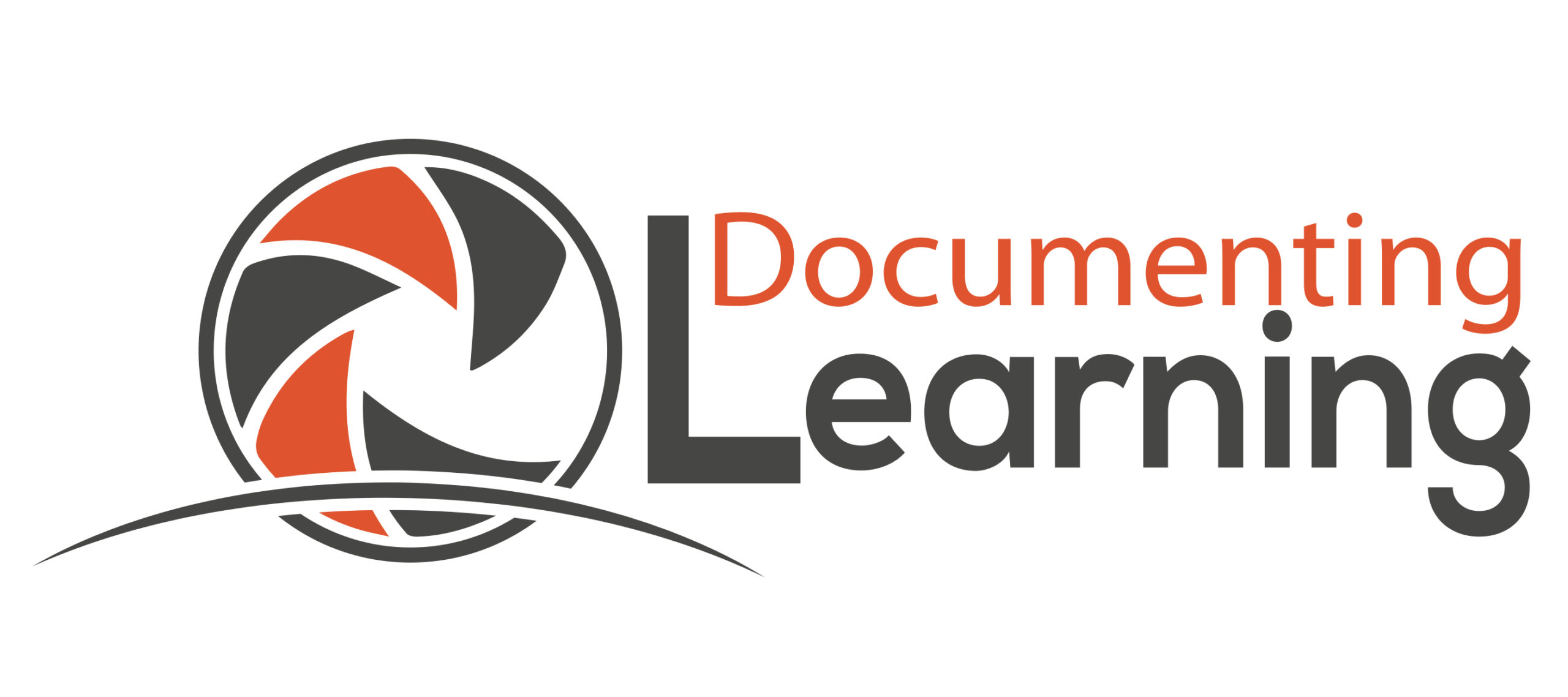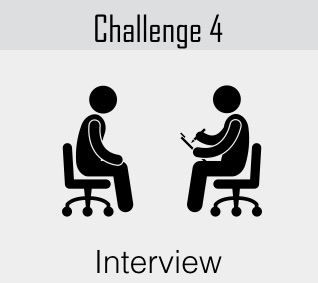Interviews are a technique used by many as mini-documentaries. They are a worthwhile way to capture voices, perspectives, authenticity of eye witnesses, and make idea and beliefs come alive.
- How often do we wish we would have asked questions and recorded the answers of a loved one or professional colleague who has passed on?
- How often do we wish we would have captured an enlightening conversation to revisit and learn from anew years later?
- How ofter do we wish we could slow down the flow of a conversation to unpack, analyze, and reflect on as many times as we wish?
In Challenge 4 you will interview someone or a group of people of your choosing based on a predetermined topic or idea who are willing to share their own thoughts and perspectives to contribute to your own learning, as well as the learning of others—your blog readers. It could be family members, students, administrators, educational leaders, a coach, a mentor, or a professor. Regardless of who you choose to interview, plan for your final-product interview video to last between 3-5 minutes.
Determine your interview learning story’s purpose:
- What (or whose) learning story are you interested in?
- For example: how has learning changed for different generations? You could interview people from the mid-1900’s to push yourself out of your comfort zone and current understanding of learning and comfort zone. How about your personal acquisition of knowledge journey since you graduated? What technology tools and platforms have changed your life as a learner? Another idea may be to inquire about the latest best practices in Project Based Learning, or how to best implementing Digital Portfolios with your students.
- What details of your interview story do you think will be the most interesting for an audience?
- What specific evidence, artifacts, and moments in time are you looking for and want to capture during the interview?
- If interviewing a student or faculty member, how could the interview serve as a pre-assessment, mid-point check-in, or post assessment OF and FOR learning?
Prepare your interview questions:
- How can you make connections between your own learning focus/goal and your interview questions?
- How can you create questions that can contribute to your learning narrative and will peak the interest of viewers?
- What unique perspectives to the interview narrative can be contributed by your interviewee(s)? (e.g., age, experience, expertise, eye-witness, empathy) How will you word your questions to ensure his or her responses will capture the desired perspective? (Note: avoid questions that elicit only yes/no responses.)
- Can the questions you pose connect in some way to other interviews you have conducted or are planning to conduct in the future?
Consider your interview recording logistics:
- If you are using your cell phone:
- find a space where you can place the camera on a steady surface where you and/or your interviewee(s) fit “just right” in the camera frame
- be certain you and your interviewee(s) are not too far away for the microphone to capture your audio clearly
- Regarding lighting and camera angles:
- Place the interviewee(s) in an area with good lighting, and be certain you do not record directly against the light
- Choose if you want your interviewee(s) to look directly into the camera or at you during the interview
- Change the angle from which you shoot several times (e.g., sometimes shoot from the left side, sometimes from the right side, and sometimes head on)
Unpack your recorded interview video clips:
- Take the time to view (and review) each clip and:
- decide if the content contributes to your pre-determined interview purpose and learning narrative
- evaluate if each clip makes the interviewee’s thinking and learning visible to the audience
- Keep the footage that may become part of your final interview narrative; if it is not, delete the footage:
- you may need to edit individual sections of footage to keep only a desired section
Reflect on your recorded capture learning clips:
- Be cognizant of your thinking as you you are unpacking the video clips:
- What are you learning from what the interviewee(s) are sharing?
- What surprises you that your interviewee(s) share in one or more responses?
- How are you connecting what you are learning from your interviewee(s) to your previous knowledge?
- How might what you are learning impact your or others’ future learning?
- Is what you are hearing sparking an interest to learn more, or challenging pre-conceived notions?
- Is what you are hearing sparking the desire to discover other perspectives?
Creating your capture learning video product:
- Use your prefered video- or movie-making software or app to create your final video. Be certain to consider:
- How will you create an introduction segment (e.g., interview topic, date; you sharing the purpose for the interview)?
- How will the individual clips flow to create a full narrative? Will you create sub-titles per section to aid in framing context for viewers, or will the clips flow naturally without the need for additional information (e.g., interviewee’s name and title)?
- How will you share your personal learning reflections in your final video (e.g., end video with a 15-second clip of your expressing your thoughts; listing thoughts or further questions to explore just prior to or as the conclusion segment)?
- Will you include Creative Common music during the intro and exit segments to evoke a certain mood or emotion?
Share your capture learning video product:
- After you have finished creating your interview video product, upload the clip video to your YouTube or Vimeo account. (If you do not have an account, it is not difficult to create one in either platform.) Once uploaded, the file will receive an embed code that you can copy and paste into your blog post.
- Embed your video product into your blog post where it is being featured, or share the link to the video on your social media channels (and be sure to use the #documenting4learning hashtag).
To recap, follow these steps to complete this challenge:
- Plan and conduct your interview based on topic and pre-determined questions. After recording the raw footage, create your final interview video and upload it to your desired video-hosting platform (to get the embed code).
- Write a new blog post: a) embed your interview video appropriately, and b) include a reflective narrative as to what you learned from this challenge’s experience: pre-, during- and post-video production.
- Title, save, and publish your post.
After you have completed your challenge to create an Interview video blog post, please include the URL link to your post with embedded video in the Leave a Reply comment section below to share with us and your documenting community. Check back regularly to see what others have posted!
Added Amplification: Tweet or share on Instagram the link to your Interview blog post, or write a short narrative explaining the purpose for your interview and attach your interview video. Either way, be sure to include the hashtags #documenting4learning and #DLBloggingChallenge4, as well as any appropriate hashtags for your selected interview topic.
For inspiration, watch a few interview examples:

